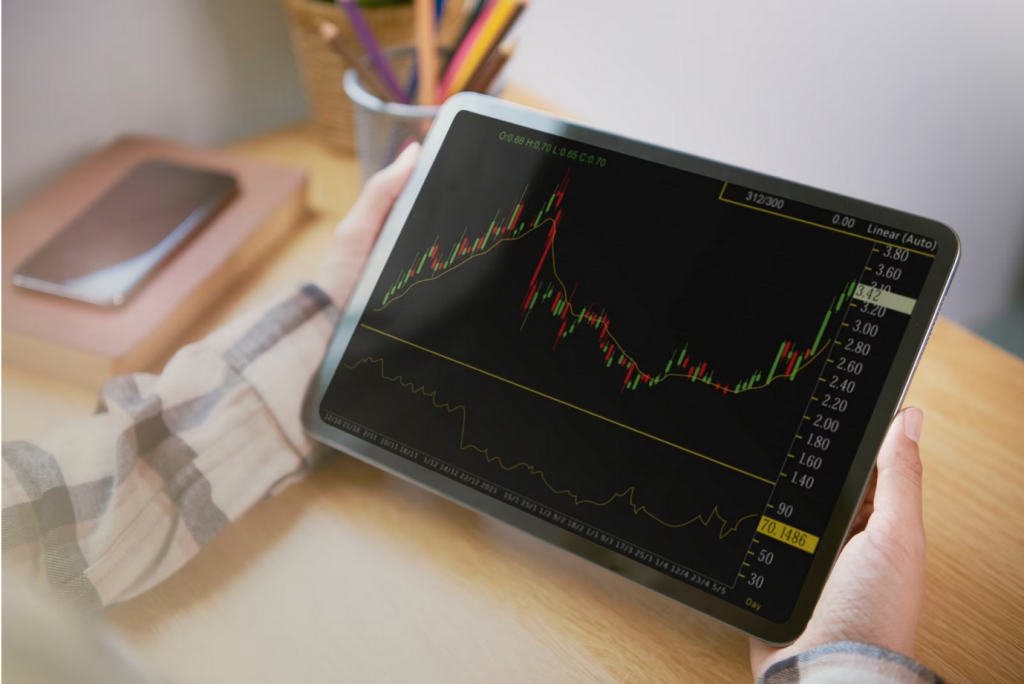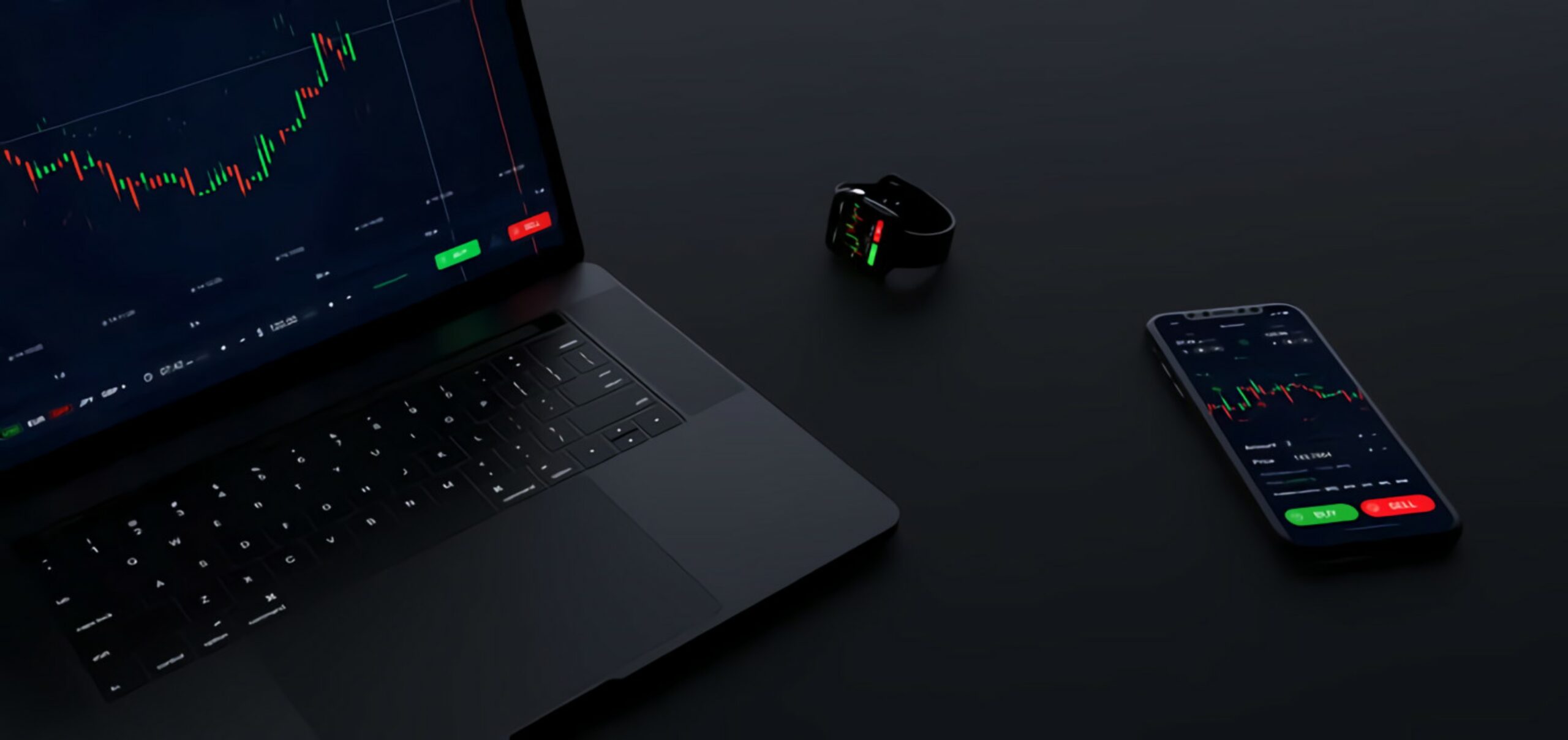What is Forex Trading?
- Why Forex Trading Can Be Profitable
- The Importance of Market Analysis in Forex
- Developing a Solid Forex Trading Plan
Setting Clear Financial Goals
- Creating a Personal Financial Goal Planner
- Identifying Risk Tolerance and Capital Allocation
- Choosing the Best Forex Strategy for Consistent Profits
Exploring Different Forex Trading Strategies
- The Advantages of Technical Analysis
- The Power of Fundamental Analysis in Forex Trading
- Mastering Profitable Forex Strategies
Scalping Techniques for Quick Profits
- Day Trading Strategies for Active Traders
- Swing Trading: Capturing Longer-Term Trends
- Building a Robust Profit Strategy
Incorporating Risk Management in Your Plan
- Diversification: The Key to Minimizing Risk
- Balancing Risk and Reward in Forex Trading
Understanding Forex Trading for Profit

What is Forex Trading?
Forex, short for foreign exchange, stands as the largest financial market globally, where currencies are incessantly bought and sold. Operating 24 hours a day, five days a week across various time zones, forex trading offers traders worldwide exceptional accessibility. The crux of forex trading lies in speculating on the price movements of currency pairs, with traders aiming to buy currencies anticipating a rise in their value and selling them in times of anticipated decline. Profits are garnered through capitalizing on these price fluctuations.
Why Forex Trading Can Be Profitable ?
Forex trading boasts immense profit potential owing to its inherent volatility. Currencies are influenced by an array of factors such as geopolitical events, economic indicators, interest rates, and market sentiment. These constant fluctuations present a plethora of trading opportunities, empowering astute traders to leverage price movements to their advantage.
Furthermore, the forex market’s high liquidity ensures that traders can effortlessly enter and exit positions at their desired prices. Unique to forex, traders can utilize leverage, magnifying potential gains. However, it is crucial to bear in mind that while leverage can amplify profits, it also escalates the risk of losses, underscoring the criticality of effective risk management for profitable forex trading.
The Importance of Market Analysis in Forex
To thrive in forex trading, comprehensive market analysis is indispensable. Two primary methods of analysis come to the fore: technical analysis and fundamental analysis.
Technical Analysis This approach involves delving into historical price charts, identifying patterns, and employing various technical indicators to predict future price movements. By discerning price trends and patterns, traders can make well-informed decisions about their entry and exit points, significantly enhancing the likelihood of profitability.
Fundamental Analysis Fundamental factors, encompassing economic data, political developments, and central bank decisions, exert a substantial influence on forex price movements. Fundamental analysis aids traders in understanding the underlying forces driving currency values, enabling them to anticipate long-term trends. When combined with technical analysis, this approach offers a comprehensive view of the market, further augmenting the probability of successful trades.
Developing a Solid Forex Trading Plan

The foundation of profitable forex trading lies in establishing a well-structured trading plan that serves as a guiding roadmap, leading traders towards their financial objectives. Below, we delve into the key components of developing a robust forex trading plan.
Setting Clear Financial Goals
Prior to immersing oneself in forex trading, it is imperative to define clear and achievable financial goals. These goals should adhere to the SMART criteria: specific, measurable, attainable, relevant, and time-bound. Determining the desired profit targets, the time frame for achieving these goals, and the acceptable level of risk is essential. By having specific targets, traders gain direction and motivation, which prove invaluable during challenging market conditions.
Creating a Personal Financial Goal Planner

A financial goal planner stands as a valuable tool for mapping out trading objectives and outlining the necessary steps to achieve them. Both short-term and long-term goals should find a place in this planner, along with the requisite actions and milestones. Regularly reviewing and updating the financial goal planner enables traders to track progress and make necessary adjustments to stay on course.
Identifying Risk Tolerance and Capital Allocation
Understanding one’s risk tolerance is pivotal to managing potential losses and preserving capital. Assessing the level of risk one can comfortably handle and establishing appropriate risk-reward ratios for trades ensures that profitability remains intact even in the face of occasional losses.
Equally significant is determining the amount of capital allocated for trading. Prudent traders avoid risking a substantial portion of their trading capital on a single trade, as this can lead to significant setbacks. Diversifying capital across multiple trades reduces the impact of any individual trade on the overall portfolio.
Choosing the Best Forex Strategy for Consistent Profits

The forex market offers a diverse array of trading strategies, each catering to different trading styles and timeframes. Traders must identify the strategy that aligns with their trading preferences, risk appetite, and financial goals. The following popular strategies warrant consideration:
1. Scalping This fast-paced strategy involves quick trades aimed at profiting from small price movements. It requires focus, discipline, and swift decision-making skills.
2. Day Trading Day traders open and close positions within the same trading day to avoid overnight exposure. It caters to traders who prefer frequent trading activity and rapid results.
3. Swing Trading Swing traders hold positions for several days or weeks to capture medium-term price movements. This approach allows for a more relaxed trading schedule, reducing the impact of short-term market fluctuations.
4. Position Trading Position traders take a long-term view and hold positions for extended periods, often months or even years. It requires patience and the ability to withstand market volatility.
As traders choose a strategy, they should consider the time they can dedicate to trading, their comfort level with risk, and their level of market experience. Thoroughly understanding and extensively practicing the chosen strategy on demo accounts before implementing it with real money is essential for success.
The Advantages of Technical Analysis

Technical analysis stands as a powerful tool empowering traders to make informed decisions based on historical price data and market patterns. By studying charts and utilizing various technical indicators, traders can identify potential entry and exit points, as well as predict price trends. Integrating technical analysis into a trading plan can provide valuable insights, enhancing the probability of successful trades.
The Power of Fundamental Analysis in Forex Trading
Fundamental analysis revolves around evaluating economic indicators, geopolitical events, and other factors influencing currency values. It provides a broader understanding of the market, aiding in identifying long-term trends. Combining fundamental analysis with technical analysis offers a comprehensive view of the market, enabling traders to make well-rounded decisions.
Choosing the Best Forex Strategy for Consistent Profits

Embarking on a profitable forex trading journey necessitates selecting the most suitable trading strategy tailored to individual preferences and risk tolerance. We delve into the process of choosing the best forex strategy for consistent profits.
Exploring Different Forex Trading Strategies
The forex market offers a diverse range of strategies, each catering to different trading styles and timeframes. Some of the most popular strategies include:
1. Scalping Executing multiple quick trades throughout the day to profit from small price movements, requiring intense focus and discipline.
2. Day Trading Opening and closing positions within the same trading day, avoiding overnight exposure, catering to traders seeking more frequent trading activity and quick results.
3. Swing Trading Holding positions for several days or weeks to capture medium-term price movements, allowing for a more relaxed trading schedule and reducing the impact of short-term market fluctuations.
4. Position Trading Taking a long-term view and holding positions for extended periods, often months or even years, requiring patience and the ability to withstand market volatility.
The Advantages of Technical Analysis
Technical analysis involves studying historical price data and using various chart patterns and indicators to predict future price movements. Its advantages include:
1. Objective Decision Making Reliance on concrete data and objective parameters reduces the influence of emotions in trading decisions.
2. Identifying Trends and Patterns Recognition of chart patterns and trends enables anticipation of potential market movements and identification of profitable entry and exit points.
3. Applicability to Various Timeframes Technical analysis can be utilized across different timeframes, making it suitable for traders with varying trading preferences.
The Power of Fundamental Analysis in Forex Trading

Fundamental analysis revolves around evaluating
economic indicators, geopolitical events, and other factors that influence currency values. Its advantages include:
1. Understanding Market Sentiment Fundamental analysis provides insights into market sentiment, helping traders gauge the overall market outlook.
2. Long-Term Perspective Consideration of economic trends and policies helps identify longer-term opportunities and potential currency trends.
3. Fundamental News Trading: Capitalizing on significant market movements caused by major economic announcements.
Combining Technical and Fundamental Analysis
While technical and fundamental analysis are distinct approaches, combining them can yield a more comprehensive understanding of the forex market. Technical analysis highlights short-term trends and entry/exit points, while fundamental analysis provides a broader context and long-term outlook. The synergy of both methodologies enhances the accuracy of trading decisions.
Section 4: Mastering Profitable Forex Strategies
To achieve consistent profits in forex trading, traders must master effective and profitable strategies tailored to their individual preferences and risk tolerance. In this section, we will explore some popular forex trading strategies and their key components to help you become a proficient trader.
Scalping Techniques for Quick Profits
Scalping is a fast-paced strategy where traders aim to make small profits from quick price movements. To succeed in scalping, traders need lightning-fast execution and a disciplined approach. Key components of scalping include:
1. Tight Spreads Since scalpers target small price movements, low spreads are essential to minimize transaction costs.
2. Risk Management Scalpers must set tight stop-loss orders to protect against sudden adverse price swings.
3. Trade Volume Scalpers typically execute a high volume of trades, making money on the cumulative profits of their small gains.
Day Trading Strategies for Active Traders
Day trading involves opening and closing positions within the same trading day, avoiding overnight exposure to market risks. Successful day traders focus on the following elements:
1. Technical Indicators Day traders use various technical indicators, such as moving averages and oscillators, to identify intraday trends and entry/exit points.
2. Time Management Time is of the essence for day traders. They need to allocate their trading hours efficiently to maximize opportunities.
3. Adaptability Markets can change rapidly during the day. Day traders must remain adaptable and adjust their strategies as market conditions evolve.
Swing Trading: Capturing Longer-Term Trends
Swing traders seek to profit from medium-term price movements that can last from a few days to several weeks. Key components of swing trading include:
1. Identifying Swing Points Swing traders focus on identifying price swing highs and lows to determine potential trend reversals.
2. Risk-Reward Ratio Maintaining a favorable risk-reward ratio is crucial for managing trades and preserving capital.
3. Patience and Discipline Swing trading requires patience to wait for the right entry and exit points based on technical analysis.
Position Trading: Embracing Long-Term Perspectives
Position trading involves holding trades for extended periods, often ranging from months to years. This strategy requires a long-term vision and attention to fundamental analysis, among other factors:
1. Fundamental Analysis Position traders need to assess economic indicators, geopolitical developments, and central bank policies that can influence long-term currency trends.
2. Position Sizing As trades are held for a more extended period, position sizing becomes critical to manage risk and preserve capital.
3. Staying Informed Position traders must stay informed about global events and economic trends that may impact their chosen currency pairs over time.
Section 5: Building a Robust Profit Strategy
To thrive in the forex market and achieve consistent profitability, traders must build a robust and well-rounded trading strategy. A strong profit strategy encompasses various elements that work together to enhance trading performance and minimize risks. Let’s explore the key components of building a successful profit strategy.
Incorporating Risk Management in Your Plan
Effective risk management is the cornerstone of a solid profit strategy. It involves setting clear guidelines on how much capital to risk on each trade and defining appropriate stop-loss levels. By limiting potential losses, traders can preserve their trading capital and remain in the game during inevitable losing streaks. A common rule of thumb is to risk only a small percentage of your trading capital, typically 1% to 2%, on any single trade.
Diversification: The Key to Minimizing Risk
Diversifying your trading portfolio is an essential risk management technique. Instead of concentrating all your capital on a single currency pair, spreading your investments across various currency pairs can help mitigate the impact of adverse market movements. Each currency pair exhibits unique behavior, and diversification allows you to capture profitable opportunities in different market conditions.
Balancing Risk and Reward in Forex Trading
A profitable forex strategy strikes a delicate balance between risk and reward. While aiming for higher profits is enticing, it’s crucial to evaluate the risk associated with each trade. A favorable risk-reward ratio ensures that potential profits outweigh potential losses. For instance, a risk-reward ratio of 1:2 means you aim to make twice the amount you are willing to risk on a trade.
The Role of Psychology in Forex Profitability
Mastering the psychological aspects of trading is just as important as understanding technical and fundamental analysis. Emotional discipline and mental resilience are vital for navigating the inevitable ups and downs of the forex market. Some psychological factors to consider include:
1. Staying Calm during Drawdowns Drawdowns are part of trading; remaining calm and sticking to your strategy during losing periods is crucial.
2. Avoiding Revenge Trading Emotional reactions to losses may lead to revenge trading, which can be detrimental to your profitability. Stick to your trading plan and avoid impulsive decisions.
3. Managing Greed and Fear Greed can lead to overtrading and taking excessive risks, while fear can prevent you from executing profitable trades. Understanding and managing these emotions are essential for consistent profitability.
Continuous Learning and Adaptation
The forex market is dynamic, and successful traders must continuously learn and adapt to changing market conditions. Stay updated on economic news, political events, and global developments that may impact the forex market. As you gain experience, regularly review and analyze your trades to identify areas for improvement and refine your profit strategy accordingly.
Combining Technical and Fundamental Analysis
Integrating both technical and fundamental analysis into your trading strategy can provide a comprehensive understanding of the market. While technical analysis helps with short-term trading decisions, fundamental analysis provides insights into long-term trends. Combining the two methodologies can enhance the accuracy of your trading decisions.
Conclusion:
In conclusion, forex trading offers a vast world of opportunities for profit, driven by the dynamic nature of currency markets. Understanding the fundamentals of forex trading is essential for aspiring traders seeking success in this fast-paced financial realm.
A solid trading plan, anchored in clear financial goals, risk management, and capital allocation, serves as the bedrock for consistent profitability. By choosing a forex strategy that aligns with individual preferences and risk tolerance, traders can capitalize on their strengths and maximize their chances of success.
The integration of technical and fundamental analysis empowers traders with a comprehensive view of the market, combining short-term trading signals with a broader understanding of long-term trends and market sentiment.
Achieving profitability in forex trading extends beyond mere technical and fundamental skills. Emotional discipline, mental resilience, and continuous learning are equally vital components of a successful trader’s toolkit. Embracing a balanced approach to risk and reward, along with diversification, safeguards traders against potential pitfalls and fosters stability in their trading endeavors.
As the forex market continues to evolve, staying adaptable and informed becomes paramount. By keeping pace with market trends, events, and economic indicators, traders can fine-tune their strategies and capitalize on emerging opportunities.
In the ever-changing landscape of forex trading, mastering profitable strategies demands commitment, discipline, and a willingness to learn from both successes and setbacks. Armed with a well-rounded profit strategy and a strong foundation of knowledge, traders can navigate the complexities of the forex market with confidence, setting their sights on consistent profitability and long-term success.















